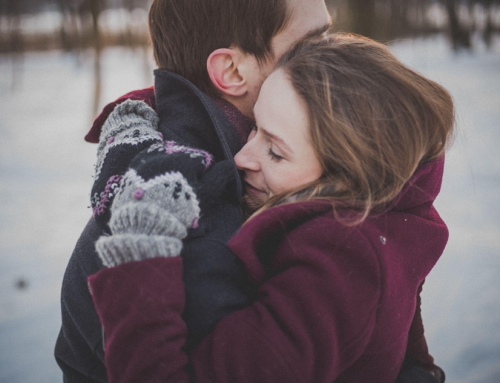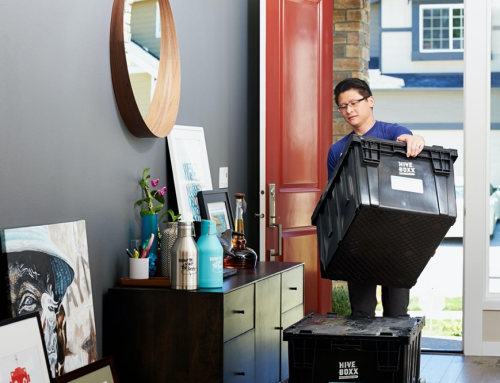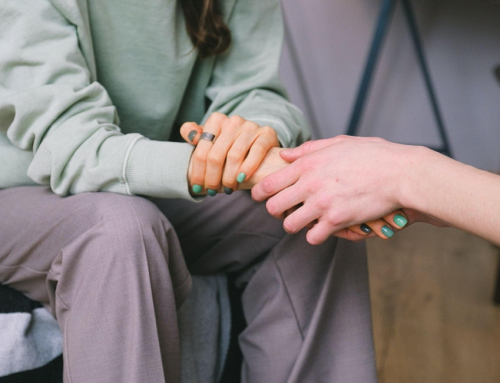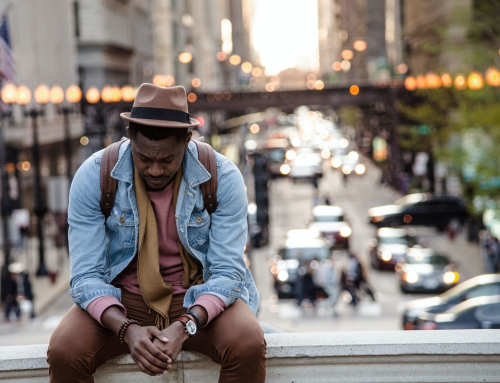…the theory explains how safety is not the removal of threat and that feeling safe is dependent on unique cues in the environment and our relationships that have an active inhibition on defense circuits and promote health and feelings of love and trust. — Dr. Stephen Porges speaking of the polyvagal theory
I take the above quote to mean, it is not the threat that is the problem, it is the absence of safety cues. So for example, if we disagree with our spouse, the disagreement is not the problem. A lack of vocal reassurance and accepting body language from them is.
In other words, we need a safe environment and others to help us not act defensive.
Safety is subconscious
Intellectually, we can all visualize what safety looks like and possibly even describe what it feels like, but our body or nervous system senses safety differently. It is a process below consciousness.
We have visceral reactions to people and places that we have no control over due to the safety or lack of safety cues they put out.
What happens in our bodies when we feel threatened
Some things that happen to us when we don’t feel safe are: our heart rate elevates, we perspire, our digestive system shuts down, we breathe shallowly and we avert our gaze.
An element of the body that reacts to our feelings of threat or safety is the vagal nerve. The vagal nerve is a bi-directional nerve that extends from the brain to the organs in the body. It allows messages to pass back and forth between the brain and the heart, stomach, intestines, etc.
One part of the vagal nerve helps with calming us down. It influences the heart to beat slower. This is called the vagal brake. If we don’t have good vagal nerve control, we can react strongly to every stimuli we deem mildly worrisome.
People who have been through trauma, have nervous systems that are quicker to go into defense mode — fight or flight response. Fight or flight mode is not conducive to fulfilling social interactions.
It is not a huge leap to assume highly sensitive people respond similarly (fight or flight) but I have not found direct research or documentation to validate that.
Lack of safe haven perpetuates effects of trauma and effects of trauma perpetuates distress/lack of secure base. — Dr. Sue Johnson
How we feel on the inside affects how we look on the outside
How we feel physiologically directly affects how we present ourselves to the world. If we feel tense, if our heart rate is elevated, if we perspire or have digestive issues, we do not present as safe to others. Our facial expressions, tone of voice, posture and gestures give away our underlying distress. This makes others feel uncomfortable with us. Their discomfort affects their physiology and makes them seem unsafe to us.
We subconsciously perceive messages of safety or threat from others through their facial expressions, tone of voice, posture and gestures as well. It is a two- way priming for relaxation or defense. It can be a vicious cycle of unsafe feelings.
The kicker is, mammals, including humans, need long-term social interdependence to survive. Isolation is traumatic and compromises health. So we are left dependent on others and social engagement. We are always looking to others for signs we can relax with them.
Reptiles did not have this ability
The link between social engagement behaviors and physiological state is an evolutionary product of the transition from extinct primitive reptiles to mammals. As mammals evolved, modifications in neurophysiology enabled them to cue and detect the affective state of individuals within their species.
High sensitivity an evolutionary plus?
Our high sensitivity is a trait that evolution keeps pushing forward too. Our threat detectors are amazing, allowing us to survive and evolve. As introverts and highly sensitive people, we have exceptionally attuned nervous systems. Our conscious awareness of threats in the environment is often on overdrive. It seems our subconscious awareness also plays a part in our outward sensitivity.
Perhaps this is why we can only be with others for so long, before we need a break to recharge. Our sensitive nervous systems are constantly on high alert, making time spent with people a draining exercise in deciphering safety/non-safety. We can’t relax as easily as less sensitive people. We have a subconscious level of engagement that keeps us constantly scanning for safety cues. But when we find a community that soothes our nervous systems, we thrive even better than those with lower sensitivity.
We can’t socialize if we are keyed up
Polyvagal theory emphasizes that the neural circuits that support social behavior and emotional regulation are available only when the nervous system deems the environment safe… — Dr. Porges
In John Gottman’s book, The Seven Principles for Making Marriage Work, he states that we can’t hear or process our partner’s words if our heart rate is over 100 beats per minute. If heart rates get that high, he says to take a 20 minute break to calm down. If we do not deem an environment or relationship safe, our heart rate soars.
As I mentioned in my post How Good Are You At Accepting Others?, comparing and evaluation make us feel unsafe, defensive and inadequate. Finding others who accept us for whom we are, is essential. Acceptance does not mean tolerance. It means appreciation.
So the key is to find environments and people who make us feel at ease.
What makes us feel safe?
We feel safe if there is a level of prosody or sing-song like quality in someone’s voice. We feel safe if we observe tiny muscle movements in someone’s face that signal a light or positive regard. Body gestures that feel open and fluid, and not tense and rigid, also help us let down our guard. Again, these signals of safety are picked up implicitly. We are not conscious of the process. We simply respond with a willingness to socially engage.
Sometimes we have to go it alone
Stephen Porges’ polyvagal theory says that being able to co-regulate our nervous system with others allows us to self-regulate when needed. If we have to go without social engagement with others for a while, we can calm ourselves by focusing on our exhalation. Long exhalations reverse the effects of a keyed up nervous system. They put on the vagal brake. Also, listening to music is a way to return our bodies to a state of peace.
Ensuring our interdependence
The more at ease and safe we feel on the inside the more attractive and safe we appear on the outside. The more safe we appear, the easier it is to socially engage with others. Our interdependence is ensured.
Are you aware of how your nervous system’s reactions affect your body? How it affects your outward appearance? What can you do to feel more safe?
Photo credits: Photo by Shea Rouda on Unsplash
Photo by Hans Reniers on Unsplash








Brenda, you really touched on a lot here.
Disagreement is NOT the problem. Disagreements are natural. We are different than one another.
The problem is feeling unsafe.
We detect safety, or its absence, by the things you noted: gestures, facial expressions, tone of voice, pacing of voice, pitch. When it’s not safe, I close down. Ridicule, sarcasm, anger, dismissive expressions, gestures … There are all kinds of things that I sense that tell me … go carefully here, or avoid it altogether.
I have a very difficult time relaxing around people in general. I don’t know that I ever do relax around people, as I think about it here. If I’m with any of the very small number of people I greatly enjoy being with, I’m excited and energized. If I’m around people who are okay to be with, or crowds, I’m constantly sensing everything. Having a drink or two can help dull the sensitivity, and I relax and just have fun.
Any conflict, any upset — toward me, or toward others — and I begin to get agitated.
Being alone is where I am calmest. Where I can breathe. There’s no one around to sense, to feel, to worry about how he or she is. Solitude is safe.
I haven’t found that truly safe relationship with a woman. And at this point in my life, I sort of have accepted that I may very well live out my days alone. I have a lot of people I love, and who love me, so I’m not miserable or lonely. At all, really, as I think about it.
I probably am at the extreme end of sensitive. It has incredible gifts. It has its ways that limit me, and it’s only late in my life that I have come to really understand it, and respect it — respect who I am, and who I am not.
As always, Brenda, you have my very deep gratitude for allowing me to be here, to write, to share, to be safe.
Hi Michael. Sorry for the late response. Some of us are primed for high sensitivity, either we are born with it or we develop it due to lack of responsiveness (and thus safe feelings) from our earliest caregivers. Some are sensitive for both reasons. I fall into the group with both reasons.
I agree solitude is pure safety. It seems you agree it is worth a little feeling unsafe to venture out and connect with a few people. I think we need connection as humans but our high sensitivity puts limits on the duration or depth of it. Interesting, that you mentioned having a drink or two to ease the unease. I’ve heard and seen that work for many people.
I’m glad you don’t feel lonely. It sounds like you have enough love and connection in your life to maintain a healthy feeling of security. That’s vital. I do think some of us need less constant care. I hypothesize that creative types find a similar feeling of security, safety and connection through their work and its elements of solitude.
I will happily supply a safe space for you and your words Michael. 🙂
Hi Brenda,
This post resonates with a recent experience I had on a first (and obviously last!) date. My man date and I took a walk together on a lovely fall afternoon. He is rather handsome and sweet, but some of the questions he asked and mocking comments he made, me feel so unsafe it was hard for me to relax. I didn’t have a strong body reaction, just a general sense of unease.
On the outside, things looked OK – we laughed, chatted easily, goofed around even (well, he did), but on the inside, part of me was on alert. An insecurity I’m alas used to – and rather (too?) at ease with…
Hi! Is it Ali? I’m glad you were able to listen to your intuition and disengage from the man who made you feel uneasy. There will be others who don’t make you feel unsafe. Once you find someone you can relax with, you will know they are worth pursuing. You will also feel energized by them. I hope you find such a person soon.;)